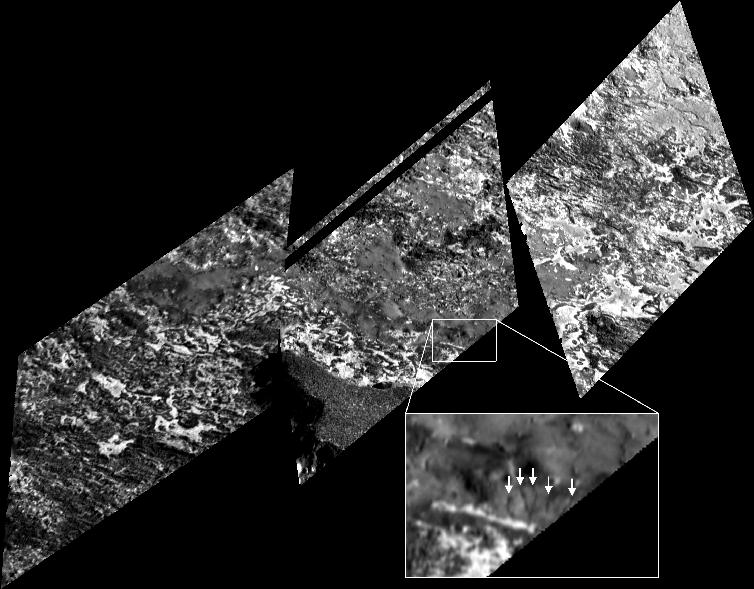

This mosaic of images acquired by NASA's Galileo spacecraft on February 22, 2000, shows the highest resolution view of Io's surface yet obtained, 5-6 meters (16-20 feet) per picture element. North is to the top of the images and the entire mosaic spans about 17 kilometers (11 miles) from east to west. The images are rotated relative to one another because of Galileo's great speed as it flies above the surface of Io. The image is centered at 32.05 N and 192.65 W.
The sun illuminates the surface from the right, but topographic shading is difficult to see because of the strong contrasts in brightness of the surface materials. A raised promontory at the bottom of the center image casts shadows into the lower right corner of the left image. Galileo scientists estimate that the promontory is up to 400 meters (1/4 mile) high.
The surface is quite varied in appearance, ranging from patches of smooth dark and bright material to the much rougher top of the promontory. In places, layers of bright and dark material appear to have been exposed by some process of erosion. Sublimation of sulfur-dioxide-rich substances may also play a role in the segregation of bright and dark materials. Several intriguing, narrow, channel-like features about 10 meters (11 yards) wide and a few hundred meters (yards) long can be seen. Some examples of these are indicated by arrows in the inset. These features may evidence for springs of some liquid, probably a sulfur compound rather than water.
Image produced by: Moses Milazzo, Planetary Image Research Lab. (PIRL), Lunar and Planetary Lab. (LPL), University of Arizona
The Jet Propulsion Laboratory, Pasadena, CA manages the Galileo mission for NASA's Office of Space Science, Washington, DC. JPL is a division of the California Institute of Technology, Pasadena, CA.
This image and other images and data received from Galileo are posted on the World Wide Web, on the Galileo mission home page at http://galileo.jpl.nasa.gov/. Background information and educational context for the images can be found at http://galileo.jpl.nasa.gov/images/io/ioimages.html.
NASA's Planetary Photojournal PIA-02562
October 26, 2000